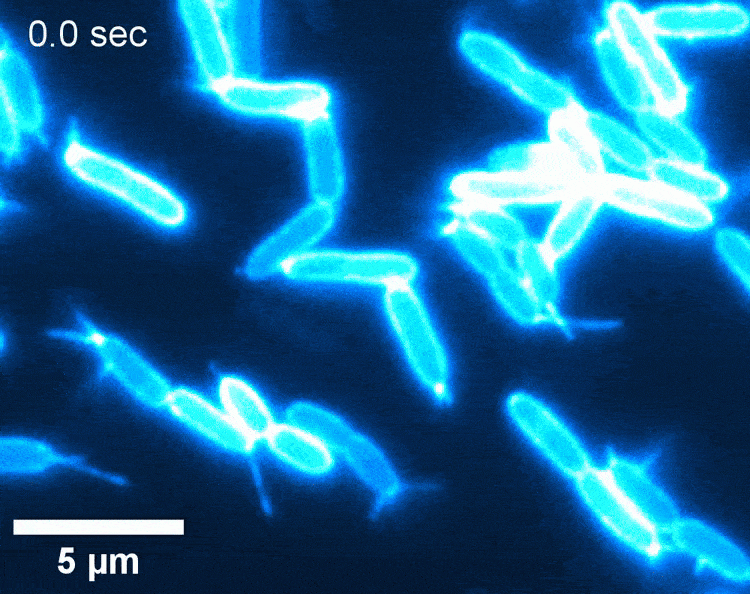University of Toronto researchers have uncovered how bacterial viruses protect their progeny in order to maximize their reach.
The phenomenon, described in a study published in Nature , relies on viral proteins to fine-tune structures on the surface of the bacterial host cell and is widely conserved - pointing to a previously unknown parallel between microbial and human immunity.
The researchers dubbed their discovery the anti-Kronos effect, after the Greek god who ate his children.
Researchers have long known that once a cell is infected by a virus, it can block subsequent reinfection by the same or closely related viruses. This process, called superinfection exclusion, was first described in bacteriophages, the viruses that infect bacteria.
"When people thought about superinfection exclusion, they were thinking about it in the context of protecting against competing viruses," says Karen Maxwell, a professor of biochemistry in U of T's Temerty Faculty of Medicine. "Nobody had thought a lot about viruses blocking themselves and why it would be advantageous for them to do so."
Maxwell's lab became interested in a bacteriophage protein called Zip when they noticed that it conferred strong protection against phage infection in the bacteria Pseudomonas aeruginosa.
Led by Véronique Taylor, a research associate in the Maxwell lab, the team showed that Zip disrupts the formation of long, thin fibres on the bacteria's outer shell so that there are fewer and shorter fibres.

These fibres play numerous roles in helping bacteria move and stick to surfaces, but they are also used by phages as a docking station to enter bacterial cells.
It seemed straightforward enough: Zip proteins made by phage-infected bacteria reduce the number and length of fibres on the bacterial surface, making it harder for other phages to attach and infect the cell.
But Taylor wasn't satisfied.
"There was always something nagging about the biology of it that I couldn't let go," she says. "It drove us to keep looking at it and ask, 'Why are they doing this?'"
The crucial results came one morning when Taylor measured the concentration of newly made phages that had been released into the nutrient broth after overnight growth. From bacteria that had been infected with a standard phage, Taylor counted roughly one million viruses per millilitre of broth. When the same phage could no longer make Zip proteins, the number of virus progeny dropped to 500.
"That was astounding," says Maxwell.
She explains that bacteria develop immunity to the phages that have previously infected them and can quickly recognize the returning viruses to prevent them from replicating and spreading.
From the phage's perspective, trying to colonize a bacterium that is already infected by the same phage is a futile endeavour resulting in lost progeny and wasted resources.
The researchers hypothesized that by preventing self-infection, Zip blocks viral offspring from unsuccessful infections so that they can infect vulnerable new hosts and spread farther.
The researchers also showed that Zip protein levels were responsive to a bacterial communication system that senses how many other microbes are nearby. This allows phages to adjust their anti-Kronos response based on the likelihood of self-infection.
"These phages have hijacked the host communication system and are using host cell density to control their gene expression," says Maxwell, noting the phenomenon had not been previously described in the literature.
Their work reframes superinfection exclusion as not just a defence mechanism against competitors, but also as a way for phages to preserve their descendants and drive viral spread.
Maxwell notes that while this phenomenon has been observed in human-infecting viruses like the human immunodeficiency virus (HIV) and vaccinia virus, this is the first time it's been described in bacterial viruses.
The researchers also found evidence of anti-Kronos systems in many other phages - including those that target pathogens like Salmonella and Listeria - suggesting that this is a common method of self-preservation shared between bacterial viruses and those that infect plants and animals.
"Microbial immune systems are the evolutionary origins of our complex immune systems, and this is just one more parallel between the two," says Maxwell.
The study was supported by the Canadian Institutes of Health Research, National Institutes of Health, Natural Sciences and Engineering Research Council and U of T's Emerging and Pandemic Infections Consortium (EPIC).






